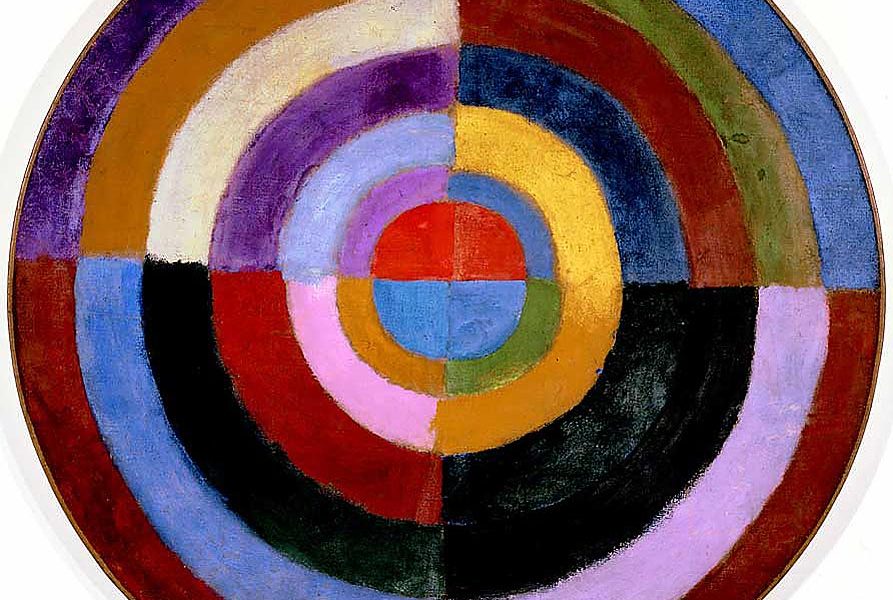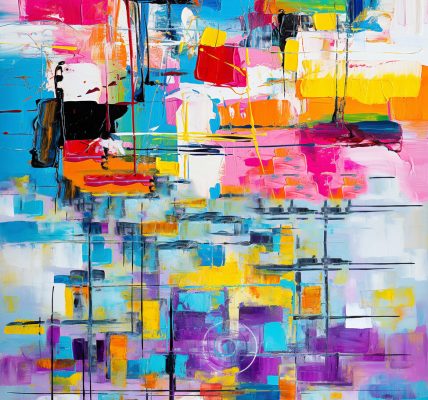Modern abstract art stands as a testament to the boundless creativity and innovation of artists who seek to challenge conventional norms, provoke thought, and evoke emotion through non-representational forms and expressions. From the vibrant colors and dynamic shapes of Wassily Kandinsky to the geometric abstractions of Piet Mondrian, abstract art has evolved into a diverse and multifaceted movement that continues to captivate audiences worldwide. In this article, we’ll delve into the origins, characteristics, and significance of modern abstract art, exploring its rich history and enduring legacy in the contemporary art world.
Origins of Modern Abstract Art:
The roots of modern abstract art can be traced back to the late 19th and early 20th centuries, a period of seismic upheaval and cultural ferment marked by rapid industrialization, urbanization, and technological innovation. Influenced by developments in psychology, philosophy, and science, artists began to experiment with new forms of expression that departed from traditional modes of representation and embraced abstraction as a means of conveying subjective experience and emotional truth.
One of the pioneers of modern abstract art was Wassily Kandinsky, a Russian-born painter whose groundbreaking works such as “Composition VII” and “Improvisation 28” signaled a radical departure from figurative representation in favor of pure abstraction. Inspired by music, spirituality, and the inner workings of the mind, Kandinsky sought to evoke a sense of transcendence and universality through his bold use of color, line, and form.
Characteristics of Modern Abstract Art:
Modern abstract art encompasses a wide range of styles, techniques, and approaches, each reflecting the unique vision and sensibility of the artist. While abstract art may lack the recognizable forms and objects found in representational art, it often conveys a sense of energy, movement, and emotion through the manipulation of color, shape, and texture.
One of the defining characteristics of modern abstract art is its emphasis on form, color, and composition as primary means of expression. Artists such as Piet Mondrian and Kazimir Malevich embraced geometric abstraction, reducing their compositions to simple geometric shapes and primary colors in pursuit of purity, harmony, and spiritual transcendence.
Another hallmark of modern abstract art is its focus on spontaneity, intuition, and improvisation in the creative process. Abstract expressionists such as Jackson Pollock and Willem de Kooning favored gestural abstraction, employing bold brushstrokes, drips, and splatters to convey a sense of raw emotion and existential angst. Their works often blur the line between painting and performance, inviting viewers to experience the immediacy and vitality of the artistic act.
Significance of Modern Abstract Art:
Modern abstract art holds profound significance as a catalyst for artistic experimentation, cultural innovation, and intellectual inquiry in the 20th and 21st centuries. By challenging traditional notions of representation and realism, abstract artists have expanded the boundaries of artistic expression and opened new avenues for creativity and interpretation.
Abstract art also plays a vital role in exploring the relationship between form and content, inviting viewers to engage with artworks on a visceral, emotional level rather than relying solely on narrative or subject matter. Through their use of color, line, and gesture, abstract artists seek to evoke a wide range of emotions, sensations, and experiences that transcend linguistic or cultural barriers.
Moreover, modern abstract art serves as a reflection of the social, political, and cultural upheavals of its time, providing a visual language for expressing the complexities and contradictions of the modern world. Abstract artists such as Mark Rothko and Barnett Newman responded to the traumas of war, genocide, and existential dread with works that convey a sense of existential uncertainty and spiritual yearning.
Legacy of Modern Abstract Art:
The legacy of modern abstract art continues to reverberate in the contemporary art world, influencing a new generation of artists, collectors, and critics who seek to push the boundaries of artistic expression and redefine the nature of visual experience. From the vibrant canvases of Gerhard Richter to the immersive installations of Yayoi Kusama, abstract art remains a vibrant and dynamic force in the global art scene.
One of the most enduring legacies of modern abstract art is its democratization of artistic practice and appreciation, democratizing access to art and empowering individuals to explore their own creativity and imagination. Abstract art encourages viewers to trust their instincts, embrace ambiguity, and engage with artworks on a personal, experiential level, free from the constraints of literal interpretation or preconceived notions of beauty.
Moreover, modern abstract art has fostered a spirit of experimentation and innovation that continues to inspire artists across disciplines and mediums. From architecture and design to music and literature, abstract art has permeated every aspect of contemporary culture, leaving an indelible mark on the creative landscape of the 21st century.
Modern abstract art stands as a testament to the enduring power of human imagination, creativity, and expression in the face of uncertainty and change. From its humble origins in the early 20th century to its pervasive influence in the digital age, abstract art continues to challenge, inspire, and provoke viewers with its boundless possibilities and infinite potentialities. As we navigate the complexities of the modern world, let us embrace the abstract as a source of wonder, discovery, and enlightenment, inviting us to see the world anew through the lens of artistic imagination and innovation.



